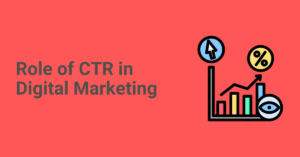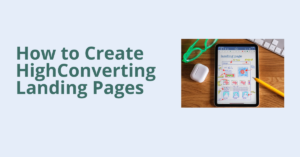For businesses aiming to reach potential customers online, Google Ads is one of the most powerful tools available. As a pay-per-click (PPC) advertising platform, Google Ads allows you to create and manage ads that appear on Google’s search engine results pages (SERPs) and across Google’s vast network. With Google Ads, businesses can drive targeted traffic to their websites, boost brand visibility, and ultimately increase conversions.
In this guide, we’ll cover the basics of Google Ads, explain its main components, and share some tips to help you set up a successful campaign.
What is Google Ads?
Google Ads (formerly known as Google AdWords) is Google’s online advertising platform. It operates on a PPC model, where advertisers bid on specific keywords, and when someone searches for those keywords on Google, relevant ads appear in the search results. You only pay when a user clicks on your ad, making it a cost-effective way to reach potential customers who are actively searching for products or services.
In addition to search ads, Google Ads offers several ad formats, including display ads, video ads, shopping ads, and app promotion ads, enabling advertisers to reach users across different devices and platforms.
Key Components of Google Ads
1. Search Campaigns
Search ads are text-based ads that appear on Google’s search results page when users search for keywords related to your business. These ads are highly targeted, as they’re shown to people actively searching for information, products, or services.
2. Display Campaigns
Display ads are visually engaging ads that appear on websites within Google’s Display Network. They’re ideal for raising brand awareness and reaching a broad audience, especially for businesses looking to increase visibility.
3. Video Campaigns
Video ads are displayed on YouTube and across Google’s video partner sites. They’re ideal for storytelling, brand-building, and creating a deeper emotional connection with your audience.
4. Shopping Campaigns
Shopping ads display product images, prices, and store information on Google’s search results page and are particularly beneficial for eCommerce businesses. They help users see product details upfront, encouraging clicks and conversions.
5. App Promotion Campaigns
These ads are used to promote mobile app installs and engagement. Google Ads automatically optimizes these campaigns to reach users across Google Search, Play, YouTube, and the Display Network.
6. Performance Max Campaigns
This campaign type allows advertisers to access all of Google’s ad inventory in a single campaign. Google uses machine learning to optimize ad placements across all channels, including Search, Display, YouTube, and more, to meet specific goals like sales or leads.
How Google Ads Works: Bidding and Quality Score
Google Ads operates on an auction system where advertisers bid on keywords relevant to their business. When a user searches for a keyword, Google assesses the bids and assigns a Quality Score to each ad, determining its relevance and quality. The Quality Score is based on factors such as:
– Expected Click-Through Rate (CTR): How likely users are to click on your ad.
– Ad Relevance: How closely your ad matches the user’s search query.
– Landing Page Experience: The quality and relevance of the landing page your ad directs users to.
Ads with a higher Quality Score and bid are more likely to appear in prominent positions on the search results page. By focusing on ad relevance and landing page quality, businesses can improve their Quality Score and potentially lower their cost-per-click (CPC).
Getting Started with Google Ads: A Step-by-Step Guide
Step 1: Define Your Goals and Budget
Before creating an ad campaign, it’s essential to define your objectives. Are you looking to drive website traffic, generate leads, increase sales, or promote brand awareness? Defining your goals will help guide your campaign type and targeting strategy.
Set a budget based on how much you’re willing to spend daily or monthly. Start small, then adjust as you gain insights from campaign performance.
Step 2: Conduct Keyword Research
Keyword research is the foundation of a successful Google Ads campaign. Use tools like Google’s Keyword Planner to find keywords that are relevant to your business, have a good search volume, and are within your budget.
Consider using a mix of broad, phrase, and exact match keywords to target different types of search intent:
– Broad Match: Shows ads on searches that relate to your keyword.
– Phrase Match: Shows ads on searches that include the meaning of your keyword.
– Exact Match: Shows ads on searches with the exact keyword or close variations.
Refining your keyword list based on relevance and intent can improve your ad targeting and increase the likelihood of conversions.
Step 3: Write Compelling Ad Copy
A well-written ad can capture attention and encourage clicks. Keep these tips in mind:
– Use Clear, Action-Oriented Language: Include action words like “buy,” “get,” or “learn” to encourage users to click.
– Highlight Unique Selling Points: Showcase what makes your product or service stand out.
– Include Relevant Keywords: Adding keywords improves your ad relevance and can boost your Quality Score.
– Use a Strong Call-to-Action (CTA): Direct users to take a specific action, like “Shop Now” or “Sign Up Today.”
Effective ad copy is crucial for drawing clicks and maximizing your ad’s performance.
Step 4: Create a Landing Page that Converts
Ensure that the landing page you link to matches your ad’s intent and is optimized for conversions. A well-designed landing page should:
– Be relevant to the ad’s offer.
– Have a clear headline and call-to-action.
– Be mobile-friendly
– Load quickly to reduce bounce rates.
By providing a seamless transition from ad to landing page, you increase the chances of users converting.
Step 5: Set Up Conversion Tracking
Conversion tracking allows you to measure the effectiveness of your ads by tracking specific actions, like purchases or sign-ups. Setting up Google Ads conversion tracking helps you understand which ads drive results, so you can allocate budget more effectively.
To enable tracking:
1. Go to Tools & Settings > Conversions in your Google Ads account.
2. Select the action you want to track, like a form submission or purchase.
3. Follow the setup instructions to implement the tracking code on your website.
Step 6: Monitor and Optimize Your Campaigns
Regularly monitoring your campaigns is key to maximizing their effectiveness. Use Google Ads’ Reporting and Analytics tools to track performance metrics like clicks, impressions, and conversions.
Optimization tips:
– Adjust Bids: Raise bids on high-performing keywords and lower bids on low-performing ones.
– Use Negative Keywords: Exclude irrelevant keywords to avoid wasted spend.
– Test Ad Variations: Create multiple versions of your ad copy and test which performs best.
– Refine Targeting: Use location, device, and demographic targeting to reach your ideal audience more effectively.
Tips for Success with Google Ads
1. Start with a Small Budget
Test the waters with a smaller budget, then gradually increase it as you understand what works.
2. Use A/B Testing
Continuously test different ad copies, images, and CTAs to find the most effective variations.
3. Utilize Remarketing
Show ads to users who have visited your website but didn’t convert, encouraging them to return and complete a desired action.
4. Monitor Quality Score
Improve ad relevance, click-through rate, and landing page quality to increase your Quality Score, which can lower costs.
5. Focus on Mobile
With a large portion of searches happening on mobile, ensure that your ads and landing pages are mobile-optimized.
Final Thoughts
Google Ads is a robust tool that can significantly boost your online presence and drive measurable results when used effectively. While setting up and managing a campaign may seem complex initially, a well-structured Google Ads strategy can bring qualified traffic, improve lead generation, and increase sales.
By following these steps and tips, you’ll be well on your way to launching successful Google Ads campaigns that drive value for your business. Start small, keep testing, and use data-driven insights to make informed decisions and see tangible growth with Google Ads.




